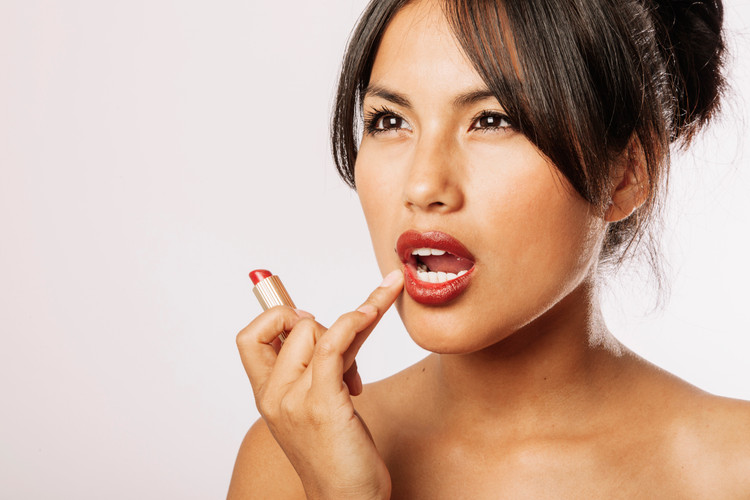The History of Lipstick: From Ancient Times to Today
Posted by Doi, Isadora. on 24th Jul 2025
Lipstick is one of the oldest and most iconic beauty products in history. From ancient civilizations to modern times, lipstick has evolved in both form and meaning, representing beauty, power, and even rebellion. In this article, we’ll take you on a journey through time to explore the fascinating history of lipstick and how it has become the beauty staple we know and love today.
The Ancient Origins of Lipstick
The use of lipstick dates back to ancient Mesopotamia, around 3500 BC, when both men and women used crushed semi-precious stones and minerals to color their lips. These early lip colors were not only used for decoration but were also a symbol of social status. In ancient Egypt, both Cleopatra and other elite figures were known for wearing lip color made from a blend of red ochre and insects like carmine, which was derived from crushed cochineal beetles.
In Egypt, lipstick was seen as a symbol of power and was linked to the gods and goddesses of beauty, such as Hathor, the goddess of love and beauty. Egyptian women applied lipstick to enhance their beauty, but also to ward off evil spirits. The practice spread to the Roman Empire, where both men and women used red pigments to color their lips, with some even experimenting with more elaborate cosmetics for the face.
Medieval and Renaissance Lip Colors: A Sign of Nobility
During the Middle Ages, lipstick fell out of favor in Europe, as it was seen as immodest and associated with prostitutes and the lower classes. The church condemned the use of cosmetics, considering it a sin. However, in other parts of the world, such as China and Japan, lipstick continued to be used, often made from ingredients like crushed flowers, wax, and berries.
It wasn’t until the Renaissance that lipstick made a comeback. Noblewomen, such as Queen Elizabeth I, revived the use of lip color. Elizabeth I famously wore a bright red lipstick, made from a mixture of beeswax and plant-based pigments, to enhance her pale complexion. During this time, lipstick was considered a symbol of wealth and nobility.
The Evolution of Lipstick in the 18th and 19th Centuries
In the 18th century, the use of lipstick began to spread to a wider audience, although it was still mostly associated with the upper classes. Lipstick was typically applied using a brush or the fingers, and the colors ranged from soft pinks to deep reds.
By the early 19th century, the industrial revolution brought about advances in cosmetics production. The first commercially produced lipstick appeared in the United States in the late 1800s. It was made from tinted powders, waxes, and oils, and it came in a tube similar to what we use today. The invention of the twist-up lipstick tube in 1915 by Maurice Levy marked a significant turning point, making lipstick portable and easy to apply.
The Modern Era: Lipstick Becomes a Symbol of Empowerment
Throughout the 20th century, lipstick continued to evolve, gaining popularity with the rise of Hollywood glamour in the 1920s and 1930s. Iconic actresses like Marilyn Monroe and Audrey Hepburn became synonymous with bold red lips, turning lipstick into a symbol of femininity and sophistication. During the 1940s and 1950s, lipstick became a form of self-expression and empowerment for women, especially during the war years when it was one of the few affordable luxury items that women could purchase.
In the 1960s, with the rise of the feminist movement, lipstick began to take on new meanings, with women using it to express their individuality and break away from traditional gender norms. In the 1980s and 1990s, brands started introducing a wide range of colors, from bold reds to soft nudes, allowing women to experiment and express themselves in new ways.
Lipstick in the 21st Century: Innovation and Inclusivity
In the 21st century, lipstick continues to be an essential part of the beauty industry, with an emphasis on innovation and inclusivity. Modern lipsticks are now available in a variety of formulations, from matte to glossy, long-lasting to hydrating. Brands are also creating more inclusive color ranges that cater to every skin tone, ensuring that everyone can find the perfect shade for them.
The rise of social media influencers and beauty bloggers has also contributed to the evolution of lipstick. Makeup tutorials, reviews, and "swatches" on platforms like Instagram and YouTube have brought new attention to lipstick, making it more accessible and trendy. Additionally, many brands are now offering cruelty-free, vegan, and environmentally friendly lip products, catering to a growing demand for ethical beauty options.
Conclusion: The Enduring Legacy of Lipstick
From ancient Egypt to modern-day beauty routines, lipstick has stood the test of time as an essential cosmetic product. Over the centuries, it has symbolized power, beauty, and self-expression, adapting to cultural and societal changes along the way. Whether it’s the classic red lip or a bold new shade, lipstick continues to be a statement of confidence, individuality, and empowerment.
Next time you apply your favorite lipstick, remember that you’re part of a centuries-old tradition that has shaped the beauty industry and empowered generations of women to embrace their beauty.

